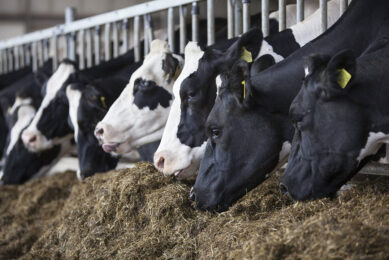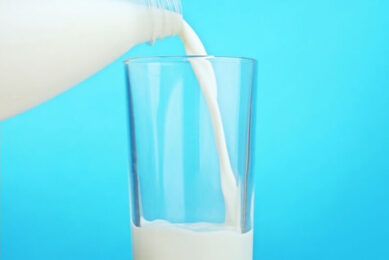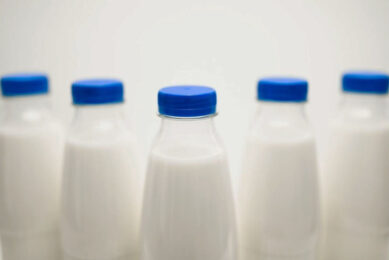Weakening demand in China to ripple in dairy markets

The Global Dairy Trade Index has fallen 11% since April following rapid increases this winter as demand is called into question amid lockdowns across multiple Chinese cities. Rabobank expects the market will carefully monitor the situation in China for signs of further weakening demand.
The move downwards of the GDT Index puts it back down to (pre-war) January levels. The weakening prices reflect demand concerns, primarily in China, where lockdowns across several major cities, including Beijing, are causing major disruption.
Dairy market ripple
China is the main buyer of whole milk powder (WMP) and imported 880,000 metric tonnes last year, Rabobank emphasises. “Potential disruption to normal Chinese demand alarmed market participants, causing WMP to slide over the course of April and finish at US$3,934 (down 4.9%) in the last auction on 17 May.” SMP prices fell only 0.6% to US$4,116 in the most recent auction, a premium to the WMP price.
Rabobank says the market will carefully monitor the situation in China for signs of further weakening demand, which would initially impact New Zealand but ultimately ripple through all other dairy markets. “Consumers are facing a tight squeeze in the supermarket given the inflationary pressure caused by war, but dairy prices could still rise.”
OVERVIEW OF GLOBAL DAIRY MARKET PRICES
Virtually all farm inputs remain elevated amid the ongoing war, according to Rabobank, and the cost push is likely to continue for the time being. Furthermore, the full effect of inflation on dairy products has yet to be felt. However, as milk is a staple good for most households, demand should not be as affected as other proteins. Private label is, however, expected to grow in share.
Milk prices
In Australia, farmgate milk prices are increasing to record levels. According to local media, supermarket chain, Coles, is said to offer AUS$9 (US$6.45) per kg milk solids for the new season, which starts on 1 July. Milk processor, Lactalis, is offering an average weighted price of AUS$8.80 (US$6.31) per kg milk solids for northern Victoria for the start of the season. The Australian Dairy Farmers Company has also announced an opening price of AUS$8.80.
Fonterra opens the 2022-2023 season at $8.25 (US$5.91) per kg milk solids. Fonterra Australia managing director, René Dedoncker, says recent falls in commodity prices and currency volatility had been factored in when setting next season’s price. “China’s Covid-19 lockdown, the Russia-Ukraine conflict and continued global supply chain disruption combined with inflation have had short-term impacts on dairy demand.”
Despite the uncertainty, farmer confidence remains high. The 2022 National Dairy Farmer Survey (NDFS) reports that 68% of Australian farmers feel positive about the future of the industry (up by 4% on 2021), while 82% are confident about the future of their own businesses (up by 2% on 2021). Profitability has continued to improve, with 90% of survey respondents expecting an operating profit in 2021-2022.
OVERVIEW OF GLOBAL DAIRY MARKET PRICES
According to a report from New Zealand’s Reserve Bank, the dairy industry in New Zealand is also on track for a strong new financial year. Fonterra record farmgate prices in New Zealand will assist with lower production output, the report says. But Fonterra has lowered its 2021-2022 forecast farmgate milk price range from NZ$9.30 (US$6.07) to NZ$9.90 (US$6.46) per kg milk solid to NZ$9.10-9.50 (US$5.94-6.20) per kg MS.
Cost increases in milk production are reaching alarming proportions and are threatening the survival of dairy farmers and milk production in Europe.
Dairy farmers
The European Milk Board (EMB) warns that cost increases in milk production are reaching alarming proportions and are threatening the survival of dairy farmers and milk production in Europe. “Even though milk prices have seen a slight upward trend in recent months, these increases do nothing to compensate for the extreme rise in costs due to higher prices for inputs like fertilisers, feed and energy,” the EMB says.
Incoming reports from countries like Italy and the Netherlands state that due to the explosion in feed prices, an increasing number of producers are forced to send their dairy cows to slaughter. A recent calculation for a sample farm with 200 dairy cows in the Italian Lombardy region discloses additional costs of about 13 cents per litre of milk compared to the previous year.
US milk production was down 1% year-on-year in April, which resulted from a smaller US milk cow herd that is still 98,000 head below last year. After 2 months of increasing cow numbers, the expansion paused due to limited heifer availability and inflationary pressures.
Join 13,000+ subscribers
Subscribe to our newsletter to stay updated about all the need-to-know content in the dairy sector, two times a week.










